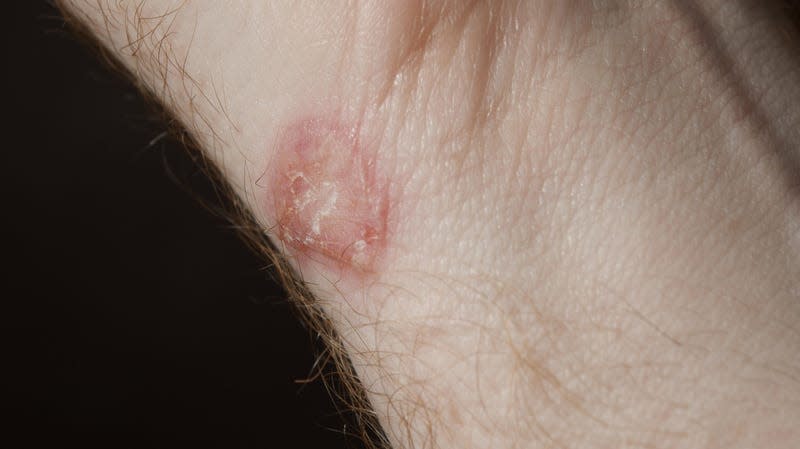A Ringworm-Causing Superfungus Is Infecting People in New York City

Super-ringworm is on the loose in New York City. In a report this week, doctors and health officials have detailed the first known U.S. cases of the itchy infection caused by a contagious and emerging fungal germ—one highly resistant to many existing drugs. The fungus was first identified in South Asia, but it’s possible that it’s now circulating locally in the area.
Despite the name, ringworm has absolutely nothing to do with the worms that can sometimes infest our body. It’s a catch-all term for fungal infections that cause a circular rash on the skin to form (the titular ring). There are different names for ringworm depending on the main site of infection, such as jock itch when it’s around the genitals and the well-known athlete’s foot.
Read more
These Winning Close-Up Photos Show Life That's Often Overlooked
Remembering Enterprise: The Test Shuttle That Never Flew to Space
There are over 40 species of fungi known to cause ringworm. And while ringworm can be very contagious through direct contact, it’s usually mild and treatable with over-the-counter antifungals. But a newly identified ringworm fungus, called Trichophyton indotineae, has turned out to be a much bigger problem than usual.
T. indotineae was discovered in South Asia several years ago, and it’s spread with alarming speed throughout the region, especially in India. Even worse, the ringworm it causes tends to be severe and hard to eradicate, often because the fungus can resist multiple antifungals. More recently, it’s started to be spotted outside South Asia, with reports in France, Belgium, Switzerland, and now the United States.
Details of these new cases were published Thursday in the Morbidity and Mortality Weekly Report, a journal run by the Centers for Disease Control and Prevention. The authors include a dermatologist from New York University as well as local and CDC health officials.
According to the report, health officials were first made aware of the cases in late February by the dermatologist, who had recently seen two patients with severe ringworm that wasn’t responding to typical oral treatment. Earlier testing of the patients’ skin samples had identified the fungus broadly as a member of the T. mentagrophytes family. But it's known that T. indotineae closely resembles these other fungi. Specialized testing this time around confirmed that the patients were indeed infected by T. indotineae.
As far as the authors know, these are the first cases of ringworm caused by T. indotineae to be reported in the U.S. And it’s likely that the fungus has already made itself comfortable here.
One case, involving a 47-year-old woman, was linked to travel. She developed a widespread rash during the summer of 2022 while in Bangladesh. Treatment there and in the U.S. failed to clear the infection throughout the rest of the summer and fall, though more recent antifungal therapy has lessened most of her symptoms. At some point, her husband and son developed similar rashes and are now being evaluated as well.
The other patient was a 28-year-old woman who developed severe ringworm in summer 2021. She also required multiple rounds of antifungal treatment, though her symptoms eventually cleared entirely. She is still being monitored in the off-chance that the infection returns. Unlike the other case, this woman had no recent travel history that could have exposed her to the fungus in the places where it’s known to be endemic. That leaves open the possibility that T. indotineae is already circulating locally in New York and elsewhere in the U.S.
The report authors are calling for doctors to be on the lookout for this fungus, especially when they encounter difficult-to-treat cases of ringworm. They also note that routine testing can misidentify it, so state and local health departments should be called for help if they do suspect its presence.
As for the average person, there are things we can do to help keep this fungus at bay. The emergence of T. indotineae has been tied to the overuse and misuse of topical antifungal and steroid creams, which are sometimes used in combination. The steroids dampen the skin’s immune response, which can then make the infection worse. This issue is even bigger in countries like India, where OTC creams contain higher-potency steroids. People should avoid steroid or combination creams in general if they suspect they have ringworm, the CDC advises.
More from Gizmodo
Sign up for Gizmodo's Newsletter. For the latest news, Facebook, Twitter and Instagram.

